 资源简介
资源简介
(共20张PPT)
Unit 2 Morals and Virtues
Part 3 Discovering Useful Structures
V-ing form used as
adverbial and object complement
1) Hearing the bell, the students began to enter the classroom.
2) Not knowing the answer to this question , he turned to his deskmate.
3) The two girl stood there for half an hour talking about the boys who were playing basketball.
4) The COVID-19 broke out throughout the world,
causing hundreds of thousands of deaths.
5) Working harder, you will make some progress.
3.读句子,思考以下问题:
①. V-ing 作状语可以表示哪些情况?
②. V-ing 作状语应注意什么?
时间状语=when...
原因状语=because...
伴随状语=and ...
结果状语=which caused...
条件状语=if...
Attention 1:
V-ing 作状语,相当于_________________________。
一个状语从句(并列句)
Attention 2:
V-ing 作状语时,它的逻辑主语必须是____________, 分词必须和句中的主语含有逻辑上的__________。
句子的主语
主谓关系
1. Read the sentences below and pay attention to the underlined parts.
1. … her brother complained, thinking of the high tuition fees.
2. Thinking of all the people still in need of help, Dr Lin opened a private clinic.
3. The new People's Republic of China saw Dr Lin Qiaozhi playing a key role.
4. At times she was even seen riding a donkey to faraway villiage to provide medical care.
1. thinking→adverbial
2. thinking→adverbial
3. playing→object complement
4. riding→object complement
1.-ing形式作状语时, 分词的逻辑主语必须是句子的主语,
分词必须和句中的主语含有逻辑上的主谓关系, 否则不能用
现在分词作状语。但要注意它的各种形式变化:
主动形式 被动形式
一般式 V-ing being V-ed
完成式 having V-ed having been V-ed
-ing形式作状语
1.作时间状语
Walking in the park,she saw an old friend.
=When/while(she was)walking in the park,she saw an old friend. 当她在公园里散步时,她看到了她的一个老朋友。
Having finished the work,he went to see his teacher.
=After he had finished the work,he went to see his teacher.
完成这次工作后,他去看望他的老师。
【特别提示】当动词 -ing 形式的动作与谓语动词的动作同时发生或几乎同时发生时,用一般式 ; 当它的动作先于谓语动词所表示的动作发生时,用完成式 。
2.作原因状语
Being ill,he couldn't go to school.
=As he was ill,he couldn't go to school.
Not knowing the way, he got lost.
= As he didn’t know the way, he got lost.
3.作条件状语
Working hard,you'll make great progress.
=If you work hard,you'll make great progress.
= Work hard, and you’ll make great progress.
4.作方式状语 He came running back to tell me the news.
Please answer the question using another way.
5.作结果状语
His parents died,leaving him an orphan.=His parents died and left him an orphan.
The snow lasted a week,resulting in a serious traffic confusion in the whole area.
=The snow lasted a week,and resulted in a serious traffic confusion in the whole area.
动词-ing形式做结果状语,表示随着谓语动词所表示的动作的发生而产生的自然结果,逻辑主语往往是前面整个句子所描述的情况,w往往可以加thus。而to do形式作结果状语时常表出乎意料的结果,有时前面可以加only,never.构成only to do/be done, never to do/be done.
He came back to the dormitory, only to find his money stolen.
6.作伴随状语
I stood by the door,not daring to say a word.
=I stood by the door,and didn’t dare to say a word.
She walked along the street,singing softly to herself.
=She walked along the street and sang softly to herself.
7.作让步状语
Working or reading,she always did her best.
=Whether she worked or read,she always did her best.
Working very hard,he didn't feel a bit tired.
=Though he worked hard,he didn't feel a bit tired.
动词 -ing 形式的时态
动词 -ing 形式(短语)作状语时,要注意它的时间性,即注意是用一般式( doing )还是用完成式( having done )。
eg Walking in the street, I met an old friend of mine.
走在大街上时,我遇到了一位老朋友。
Having finished the letter, he went to post it.
他写完信后就把它寄了出去。
Attention:
知识延伸1:独立主格结构
① I waiting for the bus, a bird fell on my head.
② Time permitting, we'll watch a movie later this class.
分词主语与句子主语不一致时,需要带上自己的逻辑主语,构成独立主格结构
知识延伸2: ( doing 和having done 作状语的区别)
1.Seeing nobody at home, she decided to leave them a note.
(主动意义,v-ing的动作和谓语的动作几乎同时发生。)
2.Having waited for an hour, he realized he had left his wallet at home.
(主动意义,v-ing的动作发生在谓语的动作之前。)
doing 作状语,表示的动作与句子谓语动词同时发生;having done表示的动作发生在句子谓语动词之前
知识延伸3: (doing 和 to do 作结果状语的区别)
① The COVID-19 broke out throughout the world,
causing hundreds of thousands of deaths.
②I came to school last Sunday morning ,only to find
nobody was in our classroom.
doing 作结果状语时,常表示自然而然,情理之中的结果;to do 作结果状语时往往表示出乎意料的结果,通常与only 连用。
使用v-ing形式作宾补,常表示宾语和宾补之间是主动关系或表示v-ing形式的动作正在进行。
2.V-ing作宾语补足语
用法1
感官动词(短语)see, watch, observe, look at, notice, hear, listen to, feel等后常接v-ing形式作宾补,宾语和宾补之间是主动关系。
以see为例:see +宾语+ doing sth. 看见·······正在做某事
1.感官动词+宾语+v-ing宾补
1). have +宾语+ doing sth. 使······持续做某事
2). get +宾语+ doing sth.使······开始做某事
3). keep/leave +宾语+ doing sth.使······一直做某事
用法2
例:I’m sorry to keep you waiting for so long.
2.使役动词+宾语+v-ing宾补
例:With the time passing by, he almost forgot everything in the past.
随着时间的流逝,他几乎忘记了过去所有的事情。
主动
用法3
3.with+宾语+v-ing宾补
当堂检测10’
1.单句语法填空:
1.China’s image is improving steadily(平稳地),with
more countries _________ (recognize) its role in
International affairs.
2.She sat at the table _________ (enjoy) the meal.
3.He suddenly woke up at midnight when he heard
someone ________ (knock) at the door.
4.I hurried to the supermarket, only_______ (find) it was closed.
5.With the mid-term exam ____________(approach),
we are all busy reviewing our lessons.
6.He left in a hurry,________ (follow) by his students. 7._____________ (work) for a few years , she was sent to study in Europe and then in 1939,in USA.
recognizing
enjoying
knocking
to find
approaching
followed
Having worked
必做题
2.写作应用
1.得知你对中国历史感兴趣,我感到很骄傲。
2.随着时间的流逝,人们的环保意识提高(raise)了。
3.面对这些问题,我写信向你寻求一些建议。
4.英语老师给了我们一些提示(tip),使这问题解决
起来更容易。
Knowing that you show interest in Chinese history, I feel more than proud.
With time going by , people’s awareness of environmental protection is raised.
Faced with these problems , I’m writing to ask you for some advice.
Our English teacher gave us some tips , making it easier to solve the problem.
Bye-bye!
展开更多......
收起↑
 资源预览
资源预览
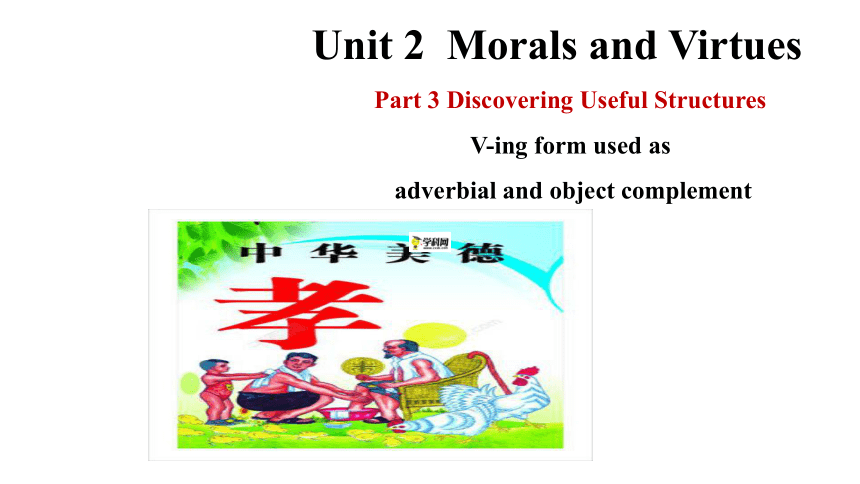
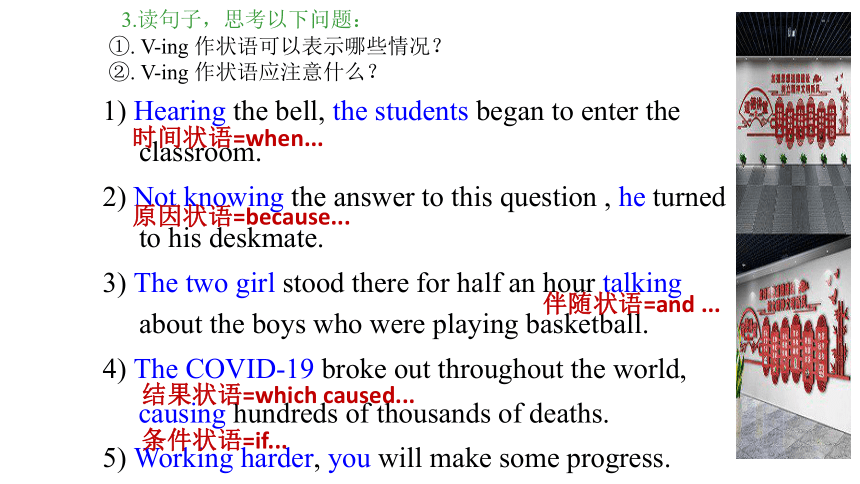
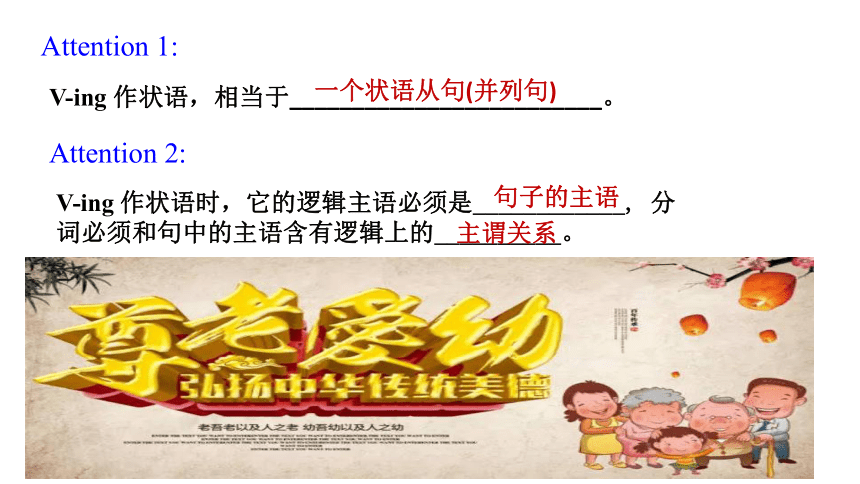
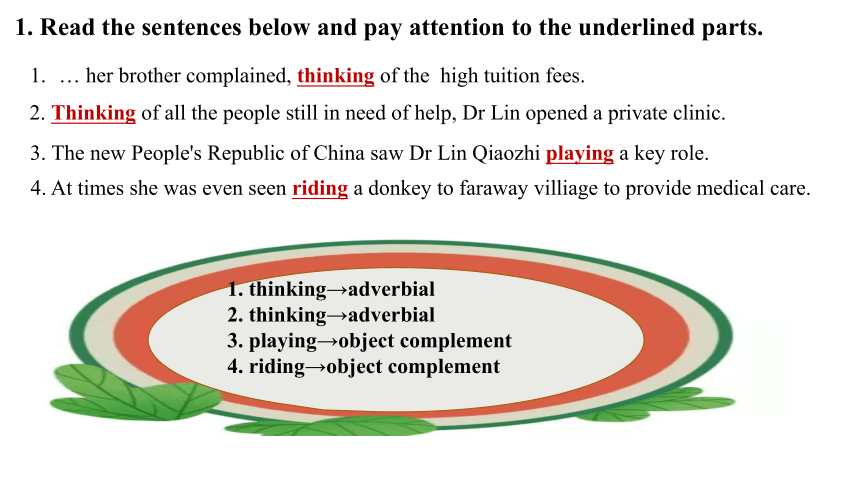
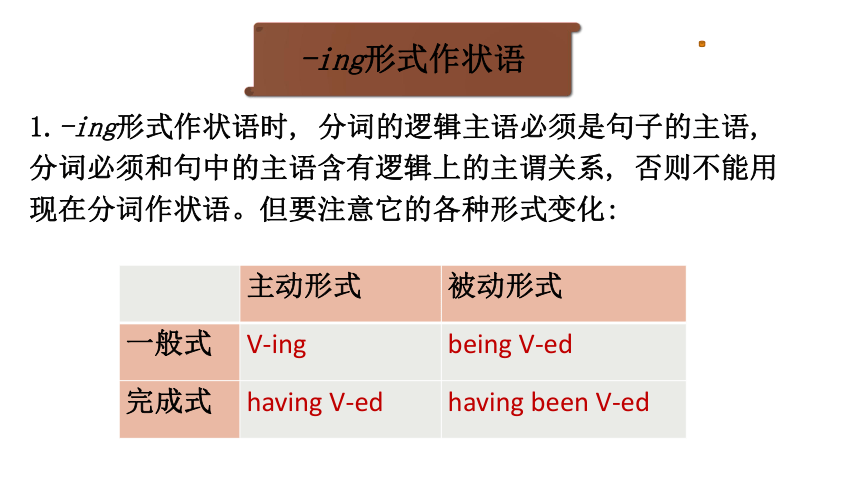
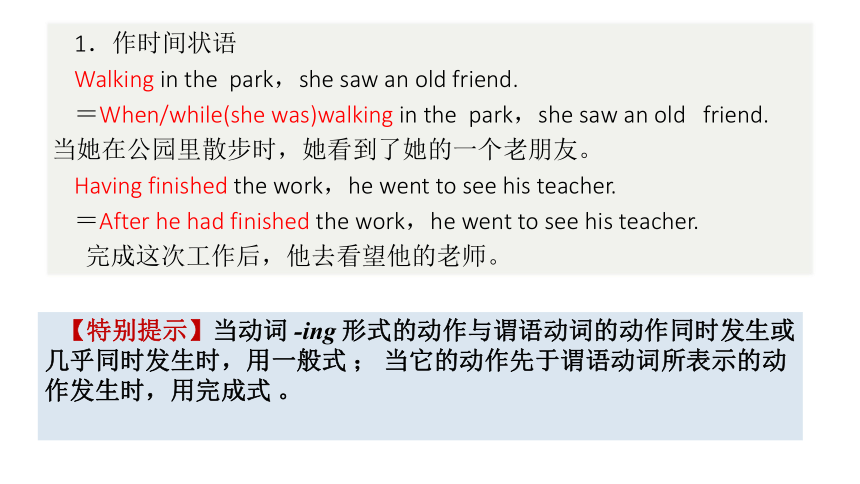
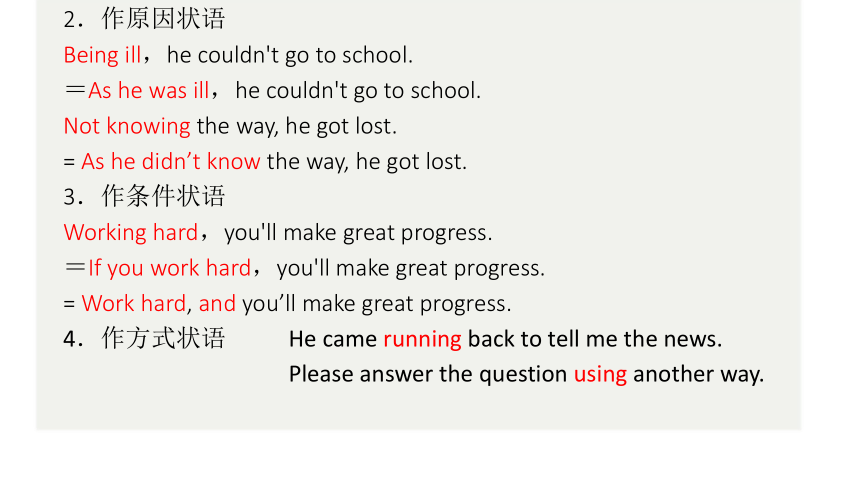
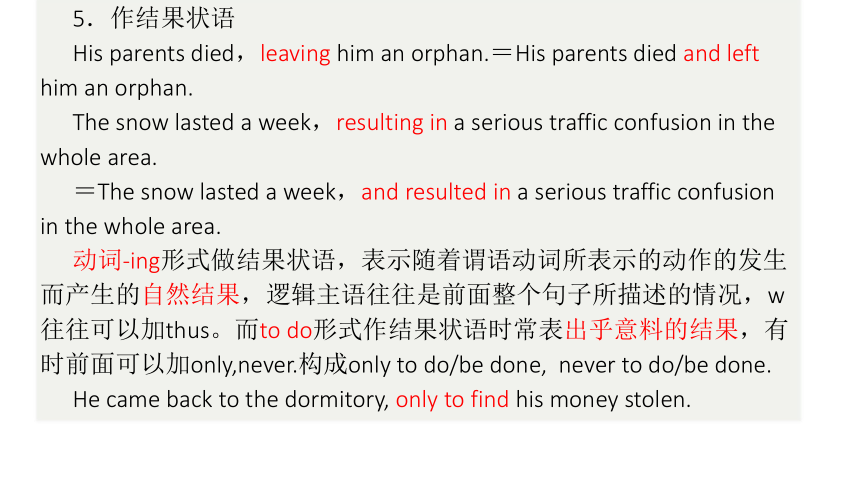
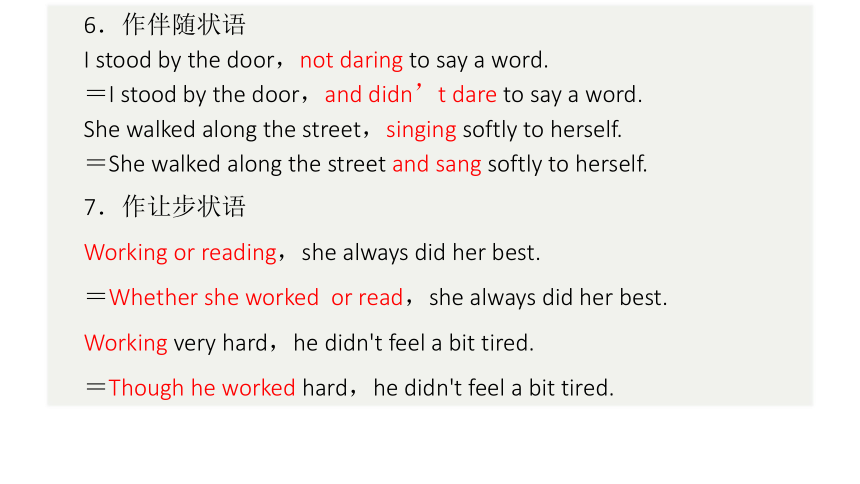
 资源预览
资源预览








